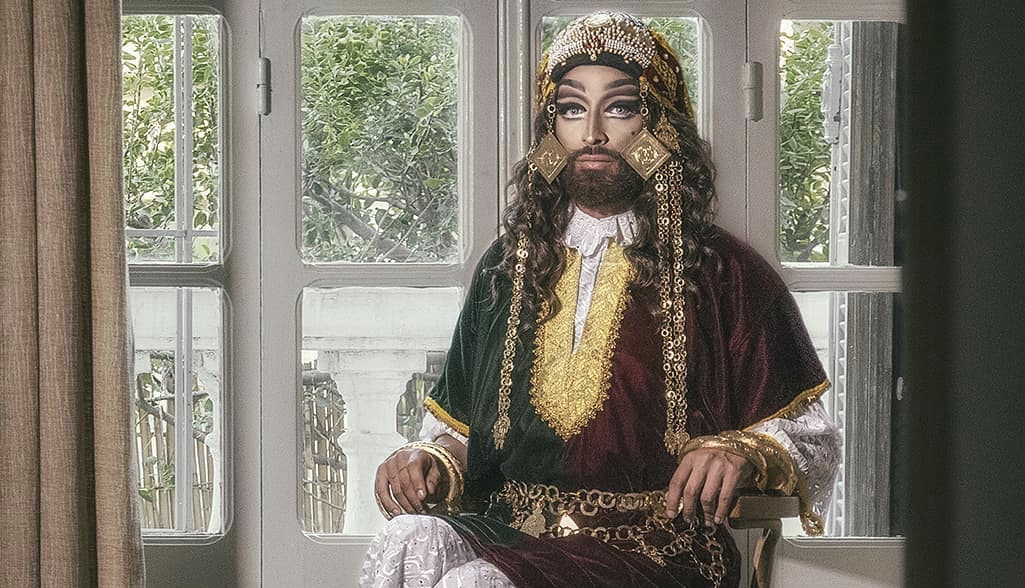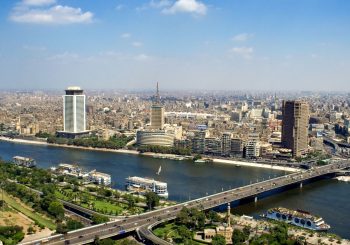
“We are all born naked and the rest is drag,” American drag icon Rupaul Charles invariably responds when asked to explain the art form’s newfound mainstream appeal, but in the Middle East and North Africa, the opposite is just as true. Throughout the years, the region’s drag tradition has been stripped of its cultural, social, and political substance.
The origins of cross-dressing and gender impersonation in the now Arab and Muslim world can be traced back to ancient times, but it wasn’t until the rise of Islamic civilization through expansion and conquests by successive caliphates and empires that drag began to take shape. Under Ottoman rule, gender bending became an art form through köçek dance, where male youths would perform in feminine attire, effecting what is traditionally considered feminine mannerisms.
This tradition quickly spread to Egypt and other vassal states, becoming a popular form of entertainment in the 17th and 18th centuries with widespread appeal across the gender and sexual spectra. In the 1920s, male impersonation flourished among Egyptian women as an act of self-expression through fashion. In fact, it is said that legendary Egyptian singer Umm Kulthum once performed in boy drag, dressed as a Bedouin man, in the early days of her career.
Since then, gender impersonation in the Arab and Muslim world has been employed strictly as fodder for comedy in big blockbuster movies and on TV shows, betraying the art form’s mission of inclusivity. One artist putting politics back in drag is Tunisian activist, designer, writer and performer Khookha McQueer.
“I think I was labelled more often and referred to as a drag queen, which is totally fine since it is easier for people to present me as something already known and has a name: Drag Queen,” they tell Egyptian Streets. “Nevertheless, I would describe myself as an experience, someone who is constantly playing with gender and aesthetic parameters to deliver the most authentic expression of my thoughts and feelings and the ways I experience my body, my identity and the way I navigate society.”
The 31-year-old has an interdisciplinary approach to drag and queer art, infusing their performances with socio-political commentary and musings on gender, drawing inspiration from Tunisia’s diverse heritage. Today, they are one of Tunisia’s most popular drag queens, a stalwart of the country’s LGBTQ+ community, and an icon of Tunis’ nightlife scene.
“For me, queer art is all about [visibility], representation and resistance. Art has the ability to reach people’s feelings and speak louder than words. Queer art is important across the region because it draws attention to queerness and its place in our societies and raise[s] questions and debates around it, making our surroundings more aware and familiar with queer expressions and issues,” Khookha explains.
Their style combines elements of gender bending and dramatic, full glam drag. But there is an authenticity to Khookha that transcends the very art form, a vulnerability, a solemness, and a sense of brokenness they aren’t afraid to bare for all to see. “I fight with my naked body, with my face, with my clothes and makeup, and my gender expressions,” they once wrote about their LGBTQ+ activism and art.
There is also an element of cultural reclamation in their art that spans Tunisia’s diverse heritage and drag’s Arab and Muslim history. “I am heavily inspired by Arabian, Ottoman, Andalusian, Middle Eastern, [and] Mediterranean aesthetics. My greatest inspirations are 80s and 90s Middle Eastern and Latinx divas, such as Sherihan, Thalia, [and] Nawal Al Zoghbi, [as well as] the art of Pierre et Gilles, Alexander McQueen, and some Soviet aesthetics,” they explain.
Like most alter egos, Khookha was born out of adversity. Raised in a conservative religious family, Khookha didn’t just have to overcome their family’s and society’s prejudices against them, they also had to get past their own transgressions against themself as well.
“I was bullied since I was kid, on a daily basis—wherever I went, whatever I did. I was convinced for the longest time that I was less than human, people made me think so. I tried to fit in and meet people’s expectations but I always failed,” they recount.
After a long depressive episode, during which they dropped out of university, Khookha joined Tunisia’s growing LGBTQ+ rights movement. “I reflected a lot about my identity and all the violence that I had to go through…When I started [my] activism, I wasn’t taken seriously by older activists, they had their own traditional and conventional ways of doing things,” they explain. “I had to struggle a lot, and suffer once again from rejection, violence and erasure. In a gay-men-dominated scene, I was one of the very first and very few non-binary activists in [Tunisia], I had to fight for my own path and pave the road for a new diverse queer scene.”
But even now, as a prominent figure in Tunis’ queer nightlife scene and the country’s politically progressive circles, Khookha is often the target of cyber bullying and harassment. This is only compounded by the challenges the LGBTQ+ community sill faces in the Muslim-majority country, such as disproportionate unemployment and inequality before the law.
“The overall political, cultural and legal climate in Tunisia doesn’t help queer individuals get access to basic human rights. Queer individuals are still rejected from family, society and workspaces, being subject[ed] to all kinds of violence and discrimination,” they explain. “Homosexuality is still criminalized despite the new legal reforms. The new[ly] elected president maintain[s] a hostile position towards queer rights.”
For the queer art scene, these sociocultural and political limitations result in drag artists being more economically vulnerable. Tunisia’s LGBTQ+ individuals, like many marginalized groups around the world, look inward for a sense of connection and representation, which makes drag and other forms of queer art vital for the community’s welfare.
“Queer [entertainment] activities have a great potential to attract the queer community. Queer individuals enjoy having good times around drag queens and drag shows. For the longest time, drag queens were perceived as synonymous with emancipation, pride and resistance. Drag shows are community moments,” they say.
In her book Imitation and Gender Insubordination, American philosopher and gender theorist Judith Butler writes, “Gender is a kind of imitation for which there is no original; in fact, it is a kind of imitation that produces the very notion of the original as an effect and consequence of the imitation itself.”
Gender as a social construct is a relatively new concept, but drag has existed since time immemorial. Artists like Khookha challenge our notions about gender and identity and by doing that, she embodies Butler’s immortal words, “It may be only by risking the incoherence of identity that connection is possible.”
Drag queens are the chroniclers of our histories through the ages. From Marsha P. Johnson to Lady Bunny, queer artists have been instrumental to gay liberation, and in emancipating society’s sexual and gender minorities, they sought to deliver all of humanity from the evil that is hatred. And like Khookha, they have done it by making us uncomfortable.







Comments (0)